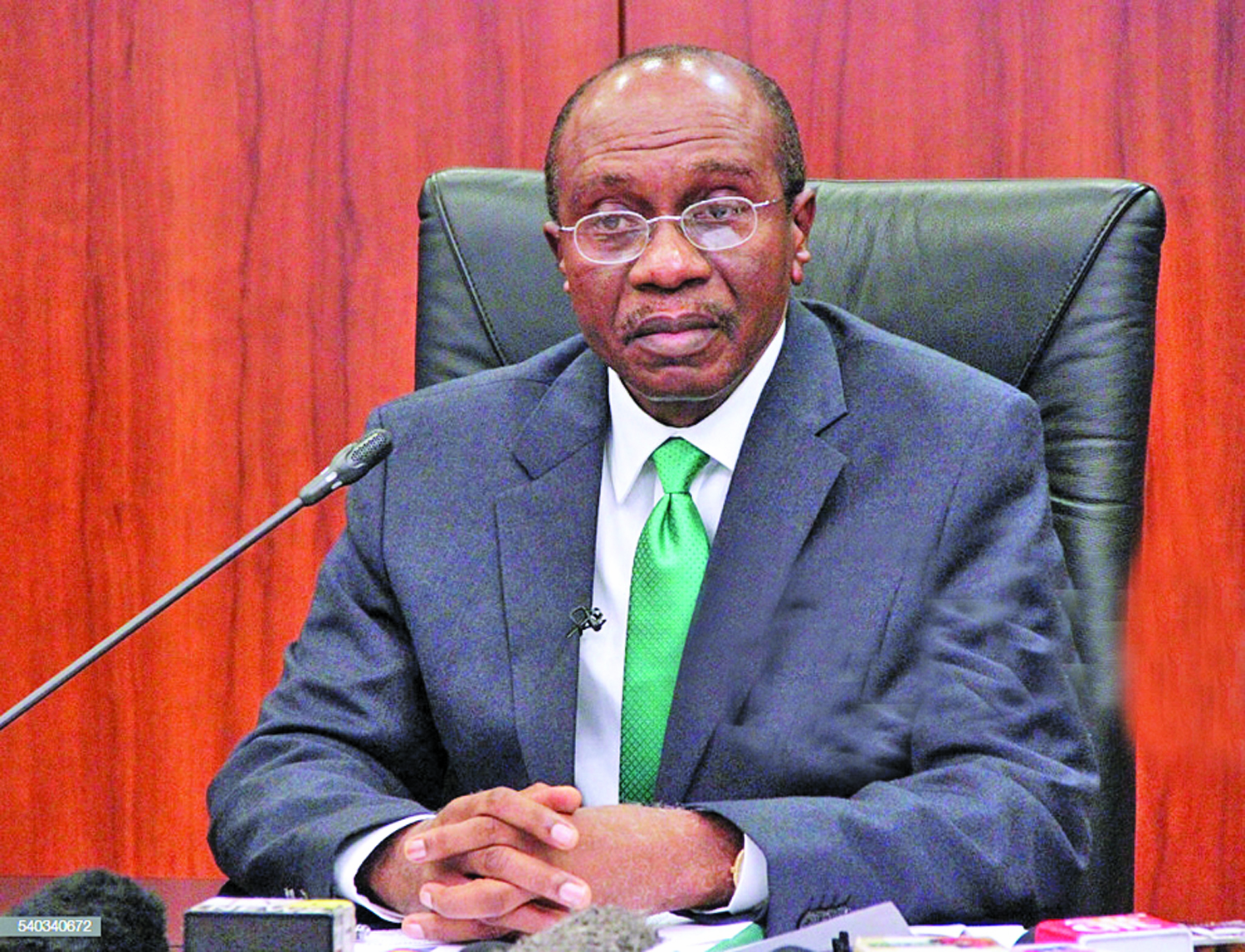

Suspended Governor of the Central Bank of Nigeria, Godwin Emefiele
Members of the Central Bank of Nigeria’s (CBN) Monetary Policy Committee (MPC) will today begin their two-day meeting in Abuja amid concerns of rising inflationary pressure and worsening unemployment.
The committee is expected to review the domestic and external macroeconomic conditions and financial markets developments since its last meeting in January and provide forward guidance on how it intends to balance the competing goals of price and exchange rate stability.
Commenting on today’s meeting, analysts at Cordros Capital Limited noted that the persistent increase in inflation was primarily due to the combined effects of ongoing security challenges in the country, forex liquidity challenges, and poor distribution networks.
“Although a dovish monetary policy contradicts rising inflationary pressures, we expect the committee to reiterate that a hike in interest rate will oppose its current growth mandate, given the adverse impact on the rising cost of borrowing for households, businesses and the government,” the Lagos-based firm stated.
Also, analysts at Greenwich Merchant Bank envisaged that the committee should back its pro-growth stance by holding the key parameters at their current levels.
“On the domestic scene, the committee would assess the economy’s surprise exit from its recession (thanks to the non-oil sector growth of 1.7 per cent), along with the optimistic outlook for 2021.
The analysts noted that “higher oil prices, which have returned to pre-pandemic levels sustained inflationary pressures (inflation rate rose to 17.3 per cent in February, from 16.5 per cent in January), higher unemployment readings (unemployment rate settled at 33.3 per cent in Q4:2020, up from 27.1 per cent in Q2:2020), pressure on external reserves from ongoing FX difficulties, and the country’s ballooning debt levels will all be factored in.”
They pointed out that overall, the policy-setting committee remains faced with three options: to tighten, hold, or lower the key policy rate.
They said: “Although, we opine a tightening stance could drive back capital flows to help boost external reserves, stem inflationary pressures and bring in the much-needed price stability, it could also distort the progress achieved so far in supporting growth.
“On the other side, while a loosening stance could hasten an economic recovery, helped by the lower credit environment, it could also worsen the real rate of returns and persistent price pressures.
“Against this backdrop, we see the committee embracing its current stance. We remain conscious of the MPR’s weak transmission effect, which supports the bank’s use of unorthodox policies, as assets remain unanchored by the policy rate.
“Case in point, the steep rise in Open Market Operation (OMO) yields appears to have set the tone of fixed income rates, pushing up stop rates at the Primary Market Auctions (PMAs) for T-bills and the bonds to 6.8 per cent (average 364-day) and 11.8 per cent, from 1.2 per cent (average 364-day) and seven per cent respectively.”
It added that a possible increase in the MPR just might suggest that authorities are prioritising efforts to control inflation over economic growth.
Speaking in a chat with THISDAY, Managing Director, Financial Derivatives Company Limited, Mr. Bismarck Rewane, said he doesn’t expect any change in the monetary policy instrument.
“Unemployment is a fiscal lagging indicator that you do not use monetary policy tools to address; it is inflation that is a big problem.
“I don’t think the MPC will adjust any of the tools because it is a very complex situation. I won’t be surprised that they do, but I am not expecting anything,” Rewane added.
Also, Head of Research, United Capital Limited, Mr. Wale Olusi, anticipates that the MPC would hold interest rate, but would continue to tighten using its open market operations.
According to him, leaving the interest rate at the current level would encourage economic growth. At the last meeting in January, the MPC left all the monetary policy tools unchanged.
The Monetary Policy Rate (MPR) was left at 11.5 per cent; cash reserve ratio (CRR) at 27.5 per cent and asymmetric corridor at +100/-700bps around the MPR, and the liquidity ratio at 30 per cent.
Surprisingly, the domestic economy had exited the COVID-19 induced recession in the fourth quarter of 2020 with real Gross Domestic Product (GDP) growth growing marginally by 0.11 per cent year-on-year, compared with a contraction by 3.62 per cent recorded in the previous quarter.
Nevertheless, the Consumer Price Index (CPI), which measures inflation increased by 17.33 per cent (year-on-year) in February 2021, compared to16.47 per cent in the preceding month, according to recent data released by the National Bureau of Statistics (NBS). The composite food index had risen by 21.79 per cent in February compared to 20.57 per cent in January. Also, Nigeria’s unemployment rate rose to 33.3 per cent in the fourth quarter of 2020 (Q4 2020) compared to 27.1 per cent in Q2, according to a recent report released by the NBS. That implied that 23.18 million of the country’s labour force either did nothing or worked for less than 20 hours a week, making them unemployed by the country’s definition of unemployment.
-THISDAY
INEC notifies Natasha, Senate of recall petition Suspended Senator Natasha Akpoti-Uduaghan yesterday got a memo from the…
FG declares public holidays for Eid-el-Fitr The Federal Government has declared Monday, March 31, and…
JUST-IN: Ex-Oyo gov Ajimobi’s first child Bisola dies At 42 Busola, the first child of…
Crisis hits LagRide, drivers threaten protest as operators move to withdraw vehicles Drivers of LagRide, a…
Rivers administrator Ibas fires Fubara’s political appointees Rivers State Sole Administrator Ibok-Ete Ibas yesterday suspended all political…
Natasha: Murray-Bruce slams Atiku, defends Akpabio Senator Ben Murray-Bruce, chairman of the Silverbird Group, has reacted…